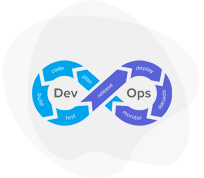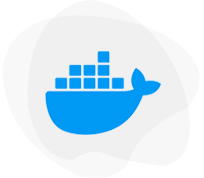Introduction:
In the DevOps field, the terms Continuous Delivery and Continuous Deployment are quite common. Continuous Delivery and Continuous Deployment are both software development approaches that aim to streamline the release process and increase the agility of development teams. That is, they reduce both the time and effort required to make software changes, reduce the risk of human error, and enable rapid feedback loops. But some people have confusion between both the terms so in this article we will learn about the differences between the two and clear all the confusion regarding Continuous Delivery vs Continuous Deployment.
Continuous Delivery (CD)
Continuous delivery is similar to Continuous Integration (CI) in that it automatically reflects all changes to the test atmosphere after the creating phase. This means that on top of automated testing, you have an automated release process and can deploy your application at any time with the click of a button.
Through this approach you can decide as per your business requirements i.e. can release daily, weekly, fortnightly. However, if you really want to take advantage of the benefits of continuous delivery, you should deploy to production as soon as possible making sure that you release small batches that allow troubleshooting in case of a problem.
Continuous Deployment (CD)
The continuous deployment approach is a step ahead of the continuous delivery approach. This approach allows each change to be released to your customers as it passes through all stages of your production pipeline. There is no human blockage and only one failed attempt will avoid a new change from being deployed to production.
Continuous deployment is a great way to speed up the feedback loop with your clients and remove all difficulties from the team because there is no longer a "release day".Developers can focus on building the software, and when they're done, they can watch their work live.
Continuous Delivery vs Continuous Deployment: Advantages and Disadvantages
Continuous Delivery and Continuous Deployment offer several advantages and disadvantages, which can influence the decision to adopt either approach. So, below are some of the major advantages and disadvantages of each:
Advantages of Continuous Delivery:
- Faster Time-to-Market: Continuous Delivery helps teams in quicker releases i.e. it helps in delivering new features and bug fixes to users faster.
- Reduced risk: With continuous delivery, teams are able to identify and resolve issues quickly, reducing the risk of releasing defective software through automating the release process and conducting extensive testing.
- Better Collaboration: Cross-functional collaboration and alignment between development, test and operations teams that is enhanced by Continuous Delivery leading to better communication and shared responsibility.
- Continuous Feedback: Frequent releases enable quick feedback loops, allowing teams to collect user feedback and make improvements more effectively.
Disadvantages of Continuous Delivery
- Deployment complexity: Requires a well-designed and robust infrastructure that is complex to set up and maintain in continuous delivery and that supports automated deployment and rollback processes.
- Manual intervention:Continuous delivery still requires manual intervention to trigger deployment to production environments, which can introduce delays and human errors.
- Overhead and tooling: Using a continuous delivery approach may require additional investments in equipment, infrastructure, and automation frameworks, which can increase initial overhead.
- Cultural Challenges:Changes to Continuous Delivery may require changes in team culture, workflow, and mindset, which can be challenging to implement and adapt.
Advantages of Continuous Deployment
- Faster time-to-market: Continuous deployment helps in the fastest release cycles by automatically deploying each succeeding software change, resulting in real-time updates for users.
- Continuous learning: Rapid deployment of changes allows teams to quickly learn from users' feedback, enabling rapid iterations and improvements.
- Minimal human intervention: Continuous deployment minimizes the need for human intervention, reduces the potential for human error, and minimizes deployment delays.
- Increased agility: With continuous deployment, teams are encouraged to respond faster to market demands, iterate on features, and experiment with new ideas more efficiently.
Disadvantages of Continuous Deployment
- Risk of errors: Automated deployment has the risk of introducing bugs or issues directly into the production environment, potentially affecting users.
- Growing reliance on automation: Continuous deployment relies heavily on a robust and reliable automated pipeline. A problem or failure in automation can disrupt the deployment process.
- Organizational readiness: Adopting continuous deployment requires a high level of maturity in development, testing, and operations practices, as well as a strong focus on automation and monitoring.
- Regulatory and compliance considerations: The automated and rapid deployment nature of continuous deployment can present a challenge in some industries with strict regulations or compliance requirements.
Conclusion:
By now you must have understood the comparison between these approaches. Both are part of the software delivery process and have their own needs, and more importantly, benefits. But in the end the choice between continuous delivery and continuous deployment depends on your specific needs and the constraints of your development team and the organization's risk tolerance.
I hope this article helps in learning something about Continuous Delivery vs Continuous Deployment. If you want to read more articles or blogs then visit our AP2V page and also get information about DevOps courses.







